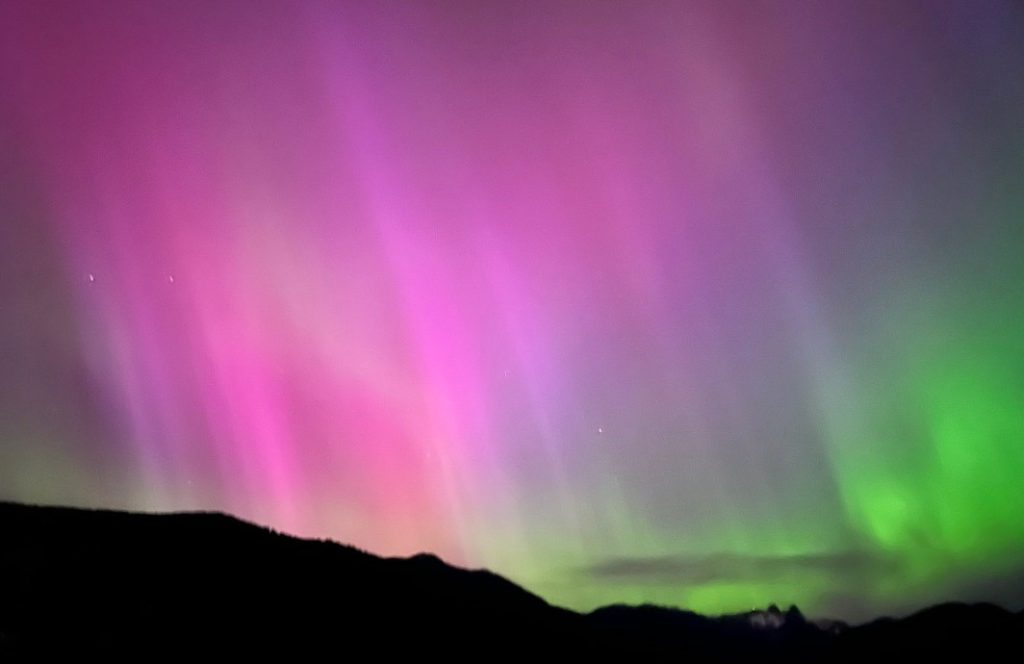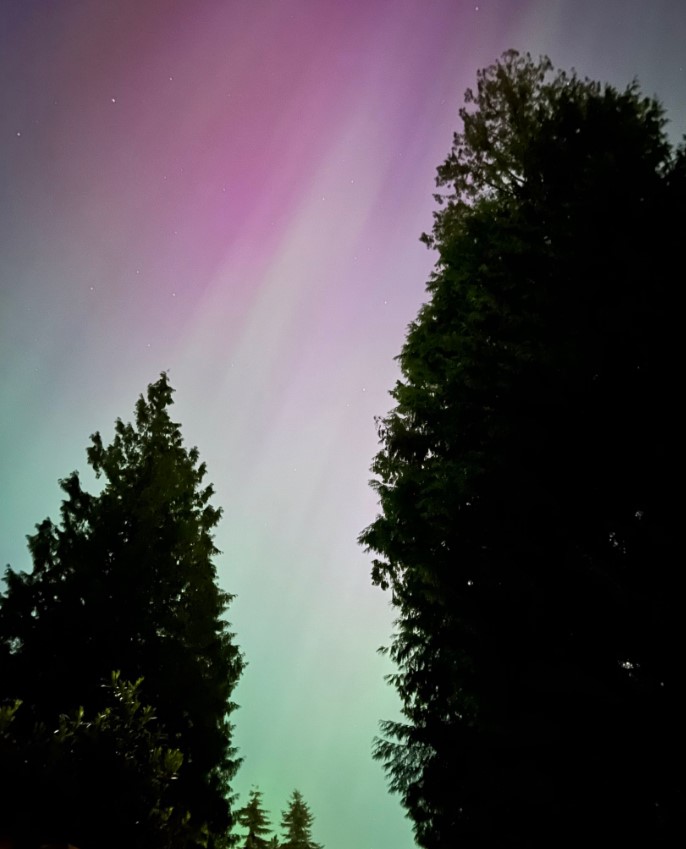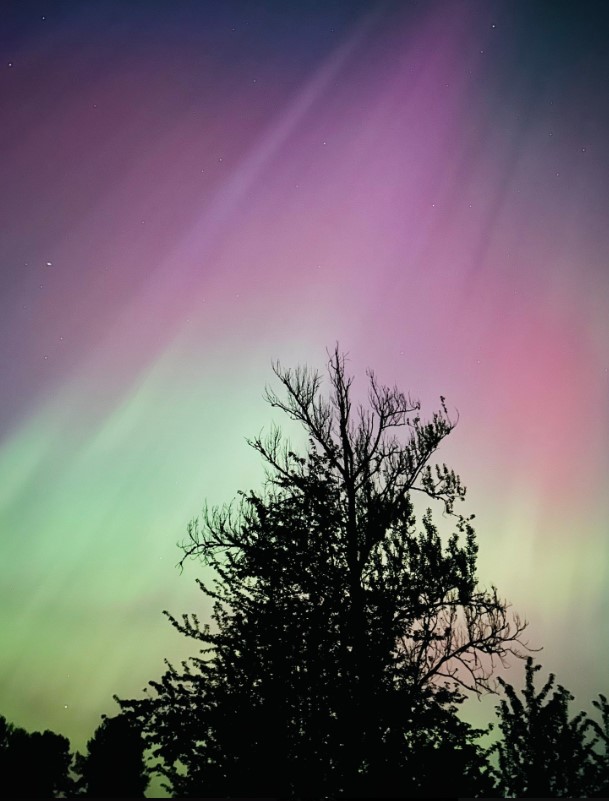Northern Lights shine across Vancouver over the weekend

Posted May 10, 2024 1:15 pm.
Last Updated May 12, 2024 12:46 pm.
The Northern Lights shone across Metro Vancouver over the weekend, and many people were able to see the spectacular colours streaking across the sky.


The National Oceanic and Atmospheric Administration (NOAA) issued a rare severe geomagnetic storm warning when a solar outburst reached Earth on Friday afternoon, hours sooner than anticipated. The effects were due to last through the weekend and possibly into next week.

The storm, the NOAA said, could produce northern lights as far south in the U.S. as Alabama and Northern California. But it was hard to predict and experts stressed it would not be the dramatic curtains of color normally associated with the northern lights, but more like splashes of greenish hues.


Matthew Cimone with the H.R. MacMillan Space Centre in Vancouver tells CityNews everything lined for Metro Vancouverites Friday night, with clear skies intersecting with the big solar storm.


“For our part of the world to get it is actually pretty rare, especially … when we have good weather,” he said. “Now would be a good time, if you’ve got an opportunity tonight, go outside, look up, and see if you can see that dancing green of the aurora in the sky.”

Away from the city lights
He notes the best way to see the aurora is away from bright city lights with a view that looks north. He suggests heading along the Sea to Sky, driving out toward Hope, or heading to a park like Jericho Beach.
Cimone says we’re seeing the Northern Lights a lot more over Vancouver because the sun is in an active phase of its solar cycle.

“The sun goes through something called a solar cycle, and we get a solar maximum and a solar minimum that are defined by the number of storms that are active on the sun’s surface. The solar maximum right now is predicted to occur somewhere between now — like May 2024 — and somewhere around 2026. So, as a result, we’re kind of at that peak period of solar activity,” he explained.


“When those storms occur on the sun’s surface, they can create those ejections of material that spray in our way — it’s kind of like the sun, you know, burping at us or maybe blowing us a kiss, if you want to think of it kind of more romantically in that sense,” Cimone continued.

“Those particles will interact with our magnetic field, and the magnetic field traps them … and will collect them at the north and south pole of the planet. When they interact with our atmosphere they cause that glow of the gases like nitrogen and oxygen in our atmosphere, which makes those dancing or the light. So because of the frequency of these storms, and the greater intensity of them, we are seeing more of this kind of activity now on our planet.”


The NOAA says the most intense solar storm in recorded history, in 1859, prompted auroras in central America and possibly even Hawaii. “We are not anticipating that” but it could come close, said NOAA space weather forecaster Shawn Dahl.
The agency said in a briefing with U.S. reporters that this storm — ranked 4 on a scale of 1 to 5 — poses a risk for high-voltage transmission lines for power grids, not the electrical lines ordinarily found in people’s homes. Satellites also could be affected, which in turn could disrupt navigation and communication services here on Earth, Dahl added.


Cimone says it’s unlikely Canadian power grids will see any real significant impacts from this solar storm — and the every day person may not notice any at all.



“What can happen is that storms like this can cause induction of electrical current in grids. You might get a few things blowing out in the most intense of storms. More likely what’s going to happen is you might have interruptions in some communication or like in your GPS navigation. If you’re listening to the radio, you might get some interference on the radio, but probably, most people won’t even notice when something like that even occurs because the magnetic field of our planet does a really, really good job of protecting us from this kind of solar activity,” he told CityNews.
-With files from The Associated Press








